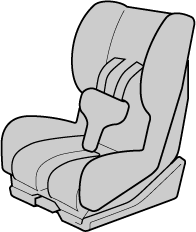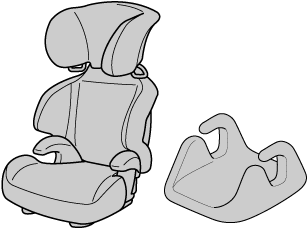

Child-Restraint System Types
(Europe and countries conforming to the UN-R 44 and UN-R 129 regulation)
In this owner's manual, explanation of child-restraint systems secured with seat belts is provided for the following 3 types of popular child-restraint systems: baby seat, child seat, junior seat.
-
Installation position is determined by the type of child-restraint system. Always read the manufacturer's instructions and this owner's manual carefully.
-
Due to variations in the design of child-restraint systems, vehicle seats and seat belts, all child-restraint systems may not fit all seating positions. Before purchasing a child-restraint system, it should be tested in the specific vehicle seating position (or positions) where it is intended to be used. If a previously purchased child-restraint system does not fit, you may need to purchase a different one that will.
Baby seat
Equal to Group 0 and 0 of the UN-R 44 and UN-R 129 regulation.
of the UN-R 44 and UN-R 129 regulation.

Child seat
Equal to Group 1 of the UN-R 44 and UN-R 129 regulation.

Junior seat
Equal to Group 2 and 3 of the UN-R 44 and UN-R 129 regulation.

(Other countries)
Please comply with the legal regulations concerning the use of child-restraint systems in your country.




